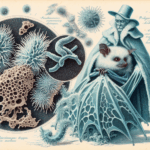A robotic hand that can tell the difference between silk and sandpaper? Yes, that’s happening. Scientists have built a prosthetic appendage that doesn’t just grab objects—it actually *feels* them. Three layers of touch sensors let it distinguish textures with eerie precision, bringing us one step closer to bionic limbs that could pass for the real deal.
The design is a clever mix of rigid framework and soft joints, mimicking human dexterity. It’s not just about gripping objects—it’s about knowing *what* it’s gripping. A ball of yarn? A ceramic mug? A live tarantula? This thing won’t crush what it’s holding (unless, of course, that’s the mission).
The implications are vast. Prosthetics that restore true tactile feedback. Robots with hands sensitive enough to perform delicate surgery. Or, for the dystopian crowd, machines that could pickpocket better than a seasoned street thief. The line between human and machine just got blurrier.
Of course, this breakthrough didn’t come from nowhere. The hand’s sensors process multiple layers of data simultaneously—pressure, texture, and shape—like tiny digital nerve endings. No more clunky, one-dimensional robotic grasps. This is nuance. This is finesse. This is the start of robots with *opinions* about fabric quality.
And let’s talk about the inevitable future. If a machine can touch, recognize, and react, what’s next? A robotic handshake that knows if you’re nervous? A butler bot that can tell the difference between a fine wine glass and a cheap knockoff? The terrifying potential of machines with *taste*? Buckle up.
This is no ordinary prosthetic. It’s a mechanical extension of human sensation, a gateway to a world where artificial limbs aren’t just functional—they’re *sensory*. If your brain is screaming, “Wait, doesn’t this mean robots could someday *feel emotions*?”—well, don’t look too closely at the research happening in AI neural networks.
The future isn’t coming. It’s already here. And it has *very* sensitive fingers.
Did You Know?
- Octopuses have touch-sensitive suckers with their own neurons, meaning they can “think” with their arms. Robo-hands are basically playing catch-up.
- Human fingertips can detect textures as small as 13 nanometers—about the width of a single virus particle. Your fingers are microscopic marvels.
- NASA once developed a robotic arm so precise it could thread a needle. Which raises the question: Why don’t we have robot tailors yet?





